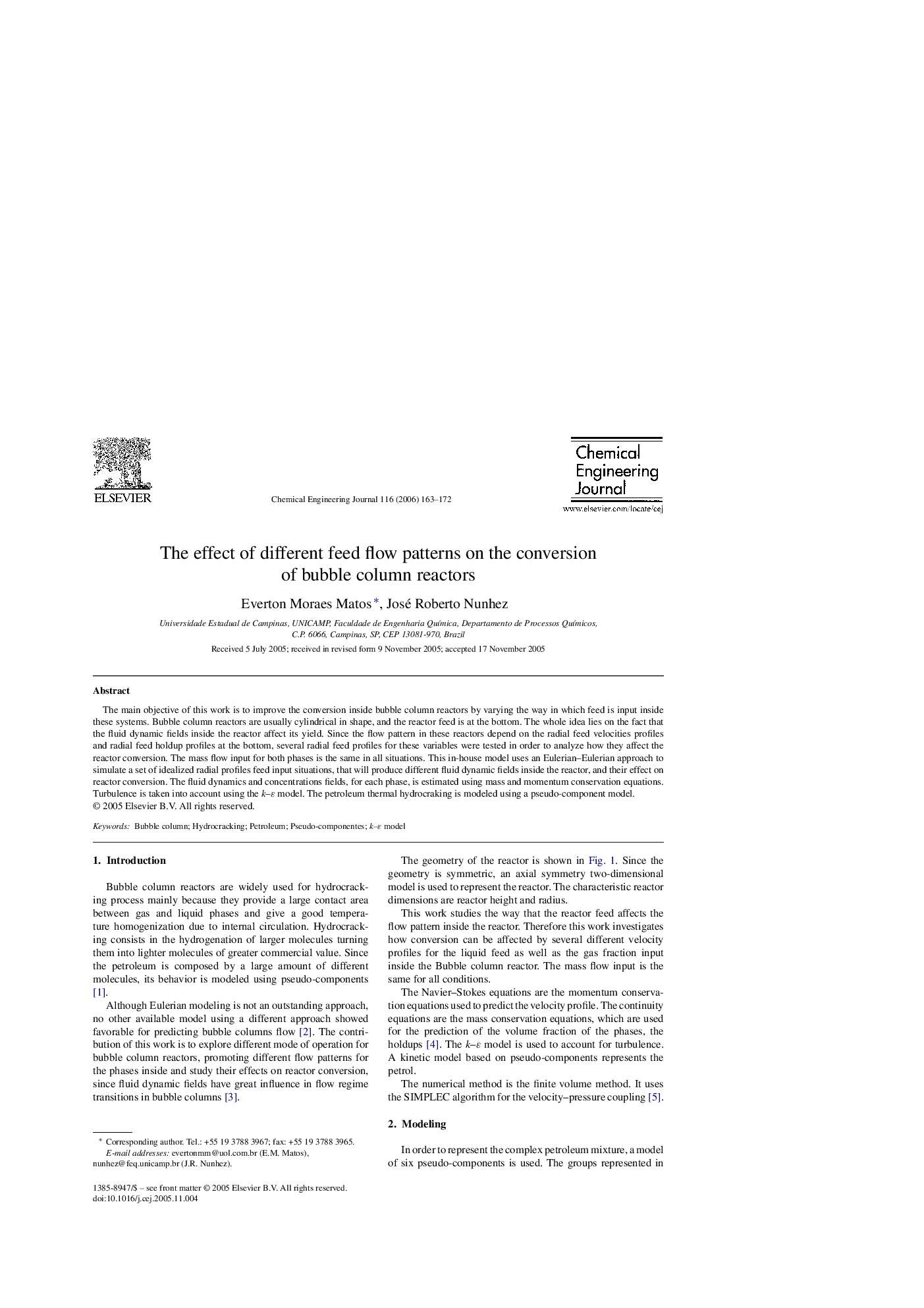| Article ID | Journal | Published Year | Pages | File Type |
|---|---|---|---|---|
| 154200 | Chemical Engineering Journal | 2006 | 10 Pages |
The main objective of this work is to improve the conversion inside bubble column reactors by varying the way in which feed is input inside these systems. Bubble column reactors are usually cylindrical in shape, and the reactor feed is at the bottom. The whole idea lies on the fact that the fluid dynamic fields inside the reactor affect its yield. Since the flow pattern in these reactors depend on the radial feed velocities profiles and radial feed holdup profiles at the bottom, several radial feed profiles for these variables were tested in order to analyze how they affect the reactor conversion. The mass flow input for both phases is the same in all situations. This in-house model uses an Eulerian–Eulerian approach to simulate a set of idealized radial profiles feed input situations, that will produce different fluid dynamic fields inside the reactor, and their effect on reactor conversion. The fluid dynamics and concentrations fields, for each phase, is estimated using mass and momentum conservation equations. Turbulence is taken into account using the k–ɛ model. The petroleum thermal hydrocraking is modeled using a pseudo-component model.
